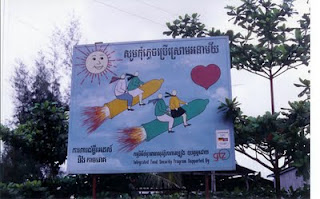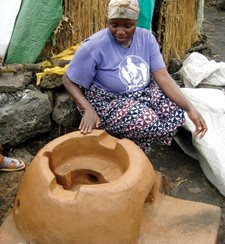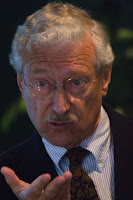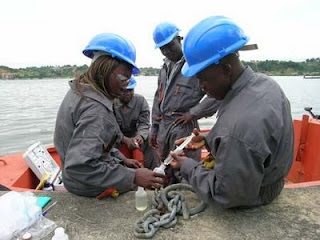-
Climate Engineering is Untested and Dangerous
› The famous mathematician John von Neumann called climate engineering a “thoroughly ‘abnormal’ industry,” arguing that large-scale interventions, including solar radiation management, were not necessarily rational undertakings and could have “rather fantastic effects” on a scale difficult to imagine. Tinkering with the Earth’s heat budget or the atmosphere’s general circulation, he said, “will merge each nation’s affairs with those of every other, more thoroughly than the threat of a nuclear or any other war may already have done”—and possibly leading to “forms of climatic warfare as yet unimagined.”
The famous mathematician John von Neumann called climate engineering a “thoroughly ‘abnormal’ industry,” arguing that large-scale interventions, including solar radiation management, were not necessarily rational undertakings and could have “rather fantastic effects” on a scale difficult to imagine. Tinkering with the Earth’s heat budget or the atmosphere’s general circulation, he said, “will merge each nation’s affairs with those of every other, more thoroughly than the threat of a nuclear or any other war may already have done”—and possibly leading to “forms of climatic warfare as yet unimagined.” -
A Response to Will Rogers’ “Budgeting for Climate”
›I have a few responses to Will Rogers’ thoughtful critique of my report, “Military vs. Climate Security: Mapping the Shift from the Bush Years to the Obama Era.”
Rogers says that “the report could be read as inferring that the Department of Defense (DoD) has an unnecessarily oversized budget”: that’s true. I think a single country that spends 43 percent of the world’s total military budget—more than the next 14 countries put together—and whose spending has nearly doubled since FY 2000 to the highest level in real terms since World War II, could find some ways to provide for the common defense with less money.
-
How Family Planning Meets Development Goals
› “Knowing is not enough; you must act and let your government know that family planning is a right and saves lives,” said Maurice Middleberg of the Global Health Council at a recent event in Chapel Hill.
“Knowing is not enough; you must act and let your government know that family planning is a right and saves lives,” said Maurice Middleberg of the Global Health Council at a recent event in Chapel Hill.
The other panelists at “How Can Family Planning Efforts Help Us Achieve the Millennium Development Goals?” (Dr. Martha Carlough of UNC, Dr. Ward Cates of Family Health International, and Pape Gaye of IntraHealth International) all provided compelling statistics demonstrating the effectiveness of family planning as an intervention that addresses the Millennium Development Goals (MDGs).
MDGs 4, 5, and 6 – reducing child mortality; improving maternal health; and combating HIV/AIDS, malaria, and other diseases, respectively – all have obvious connections to health and woman’s reproductive health. An unmet need for family planning, which is measured as the percentage of women of reproductive age who desire to space or limit their births but are not using contraception, can undermine the achievement of these goals.
For example, very early motherhood not only increases the risk of dying in childbirth, it also jeopardizes the well-being of surviving mothers—and their children, too. A child born to an adolescent mother has a greater risk of dying in infancy or childhood.
“Contraception is the best-kept secret in HIV prevention,” said Dr. Cates, who cited research that found that “current contraceptive use in sub-Saharan Africa prevents an estimated 577,200 unplanned births to HIV-infected mothers” and thus prevents the birth of an estimated 173,000 HIV-infected infants each year.
Family planning can help meet the other MDGs, including ending poverty and hunger (Goal 1); providing universal primary education (Goal 2); and promoting gender equity (Goal 3). Young mothers frequently miss out on education and socio-economic opportunities. Being able to make their own decisions about family planning and reproductive health can empower women and improve gender equity. When women are given equal opportunities for education, health, and employment, they are more likely to invest in the education and care of their children. This helps them break the cycle of poverty, hunger, and disease.
Although the MDGS don’t include any formal targets for sexual and reproductive health, the UN Millennium Project has stated that the MDGs cannot be achieved in low-income countries without access to sexual and reproductive health services, including family planning. The panelists agreed that family planning is a cost-effective intervention that provides broader positive benefits for development.
But the real strength of their presentations lay in the personal stories behind the statistics. Middleberg closed the discussion with a story about a woman in Latin America who told him that she loves her husband but was afraid of him every time he touched her. Now, after having undergone sterilization, she no longer worries and can love her husband with no fear of becoming pregnant.
A mother of six interviewed in a 2009 news article about the Philippines’ new family planning bill said, “How can one keep on having children? We don’t earn enough to feed them, much less send them to school.” New York Times columnist Nicholas Kristof interviews a Haitian woman with 10 children in a dramatic video interview, “Saving Lives with Family Planning.”
Underlying all of these facts and stories is the belief that one’s health and well-being, including access to family planning, is a right. But as Middleberg said, believing is not enough.
EngenderHealth, an international reproductive health organization working to improve the quality of health care in the world’s poorest communities, is asking Americans to create a video explaining why we should care about international family planning. Contribute your thoughts on YouTube’s Video Volunteers project.
Lisa Basalla, MPH, is a research associate with the Carolina Population Center. She graduated from Case Western Reserve University with a MPH focusing on reproductive and adolescent health. She has worked with Johns Hopkins University’s Center for Communications Programs on its reproductive health knowledge management project as well as a HIV-prevention behavior change communication project in Malawi.
Photo: A billboard promoting family planning in Phnom Pehn, Cambodia. Courtesy flickr user olerousing. -
Budgeting for Climate
› Update: Read a response by Miriam Pemberton
Update: Read a response by Miriam Pemberton“The Obama administration…has identified the task of substantially reducing greenhouse gas emissions as one of its top priorities,” writes Miriam Pemberton in a new report from the Institute for Policy Studies, “Military vs. Climate Security: Mapping the Shift from the Bush Years to the Obama Era.”
-
Copenhagen’s Chance to Reduce Poverty and Improve Human Security
› The climate community is under increasing pressure to help the developing world, especially those at the “bottom of the pyramid.” The people who did the least to cause climate change will suffer its effects the most.
The climate community is under increasing pressure to help the developing world, especially those at the “bottom of the pyramid.” The people who did the least to cause climate change will suffer its effects the most.
A critical part of the solution to this problem will be enhancing market-based incentives for climate-friendly behavior. The projects that generate credits for sale in the carbon markets vary widely in scale. However, the most successful have focused on large, localized sites, such as the smoke stack of a single plant. These “centimeter-wide, kilometer-deep” projects are easy to monitor and verify.
In contrast, most projects that benefit the poor are “a kilometer wide, a centimeter deep,” with each family across a large territory producing a small emissions reduction. Monitoring and tracking these community-based projects is usually cost-prohibitive.
DRC: Reducing Emissions and Improving Security
A Mercy Corps project in the refugee camps in the eastern Democratic Republic of the Congo (DRC) seeks to improve the security of women and children while simultaneously reducing carbon emissions.
In the war-ravaged province of North Kivu, the total number of Internally Displaced Persons (IDPs) exceeds 850,000. Demand for resources, particularly fuel wood, vastly exceeds the available supply. To collect wood, women and children have to leave the relative safety of the refugee camps, making them vulnerable to sexual assault and child abduction by rebel groups and the army. Mercy Corps surveys indicate that nine percent of women in camps have been raped or otherwise assaulted.
Mercy Corps installs fuel-efficient stoves that reduce the need for dangerous trips into the forest. A commercial carbon broker develops carbon credits from the reduction in emissions that arises from the use of stoves instead of open fires. The upfront funding from the broker supplements a UNHCR grant supporting the project, and serves to help more than 20,000 families in one of the most dangerous places on Earth.
This extreme example is one of relatively few carbon projects generating revenue that benefits vulnerable people. Yet if this kind of project can be successful in the DRC, larger projects in safer countries may be able to generate massive emissions reductions. The Copenhagen conference needs to set the stage for these types of market incentives for better climate behavior.
Raising a REDD Flag
A relatively new, UN-backed initiative known as Reduced Emissions from Deforestation and Forest Degradation (REDD) seeks to compensate forest-rich countries for protecting or regenerating their forests. However, REDD may have the unintended consequences that further erode the human rights of marginalized people dependent on those forests.
For decades, tropical forests have been logged legally and illegally by states and private companies, without any input from or compensation to indigenous forest communities, who, in many cases, were displaced or worse.
REDD thus raises a troubling question: If countries can generate carbon revenues through REDD, to whom do the revenues belong, and how will they be allocated? Many forestry ministries have a long history of corruption and mismanagement. There are already signs of ministries competing over putative REDD funds. And high-level discussions in only a few countries have included the role of communities and civil society in implementing REDD and distributing revenues.
The Copenhagen conference will be a critical milestone in the global fight to address climate change. Yet it raises significant and far-reaching questions concerning economic development and human rights of the world’s most vulnerable citizens that must not be swept under the rug.
Jim Jarvie is director of climate change, environment, and natural resources at Mercy Corps. In a recent video interview, he spoke to ECSP about how humanitarian groups are responding to new climate challenges.
Photo: Stoves that are more fuel-efficient not only help curb rapid deforestation, but help women spend less time gathering wood in dangerous areas. Courtesy Dee Goluba/Mercy Corps. -
Who Does Development? Civil-Military Relations (Part I)
›In the first decade of the new millennium, the relationship between the Department of Defense and civilian governmental agencies and NGOs has been a rollercoaster ride. At the high point of civil-military cooperation—the response to the Kurdish refugee crisis after the first Iraq war—the U.S. military provided security, access, and logistics, while USAID and NGOs provided direct assistance and expert advice to the 800-pound uniformed gorilla.
-
Who Does Development? Civil-Military Relations (Part II)
› USAID convened a study group to determine the future civil-military relationship between USAID and the Department of Defense. Two members of the study group, Dr. Frederick Burkle, Jr., and Dr. Eugene Bonventre, offer their thoughts.
USAID convened a study group to determine the future civil-military relationship between USAID and the Department of Defense. Two members of the study group, Dr. Frederick Burkle, Jr., and Dr. Eugene Bonventre, offer their thoughts.
The success of all interventions and relief efforts in conflict and post-conflict situations is dependent on politics and political action. For the United States, political action translates into military action. During my career, I’ve been involved in five conflict situations with the U.S. military, and each one made a different claim and set different restrictions for intervening with “aid.”
In the 1990s, after several frustrating years of failures, many in government believed that humanitarian assistance without political solutions achieved nothing. In good Wilsonian fashion, they saw political action—and the military interventions that followed—as a means to project, influence, and spread U.S. values. As such, the military became the security and protection tool of political humanitarianism, especially among those who considered that the convergence of humanitarian actors with the military ensured that the duty to provide assistance and the right to receive it was guaranteed.
The Kurdish crisis after the Persian Gulf War was instrumental for many reasons. One, it was the first time the Security Council did not veto a resolution to protect vulnerable populations within a sovereign state. Two, it was considered in most circles to be a success, because the coalition led by the U.S. military was considered by the humanitarian community to have been an ally in the struggle to provide security and assistance. The military presence allowed the humanitarians to work in an austere environment and to save lives.
What happened afterwards is a different story. Influenced by the post-9/11 global war on terrorism, increasingly insecure conflict environments, and the unilateral approach to conflict management, the military began to provide direct assistance to the population themselves. Liberties were taken: NGOs were recruited as “force multipliers,” “a second front,” or “part of our combat team.” The traditional leaders of humanitarian assistance and disaster relief, the Red Cross and the UN’s Office for Coordination of Humanitarian Affairs, were ignored. A “partnership” of the U.S. military-political command, the World Bank, corporate contractors, and like-minded NGOs dominated the scene.
In the last four months I’ve been confronted by two retired generals. One strongly insisted that the military must “stay within their lane” or risk destroying the military and supporting the perception of a U.S. politico-military “empire.” The other strongly insisted that the only entity in the world that could do humanitarian assistance and disaster relief is the U.S. military
So who should be leading these efforts for the United States? USAID, which was decimated in the 1980s, has never come back. The more than 12,000 USAID professionals during the 1960s-70s now number only 2,000. Reestablishing USAID’s place in development and relief will take much money, time, and expertise.
In the meantime, the only show in town, DoD, grows even larger and stronger. Gates’ statement that more civilians are needed in Afghanistan and Pakistan was actually a request for more “civilians” to be coordinated by the military.
It is not unusual to find those who think that the politico-military “relief and reconstruction complex” is impossible to change, especially when they are favored by Congress over USAID and State to solve these problems. But if “outcome indicators” rather that the current DoD-dominated “achievement indicators” were used to measure success, they would tell a totally different story.
In the last few years, the argument that such efforts are essential to “winning the hearts and minds” of a population has come out of nowhere. This claim is not grounded in accepted measures that monitor and evaluate such success. Yet the defense budgets that are heavily supported by Congress are based on achievement indicators alone.
President Obama does not come to the table with a strong and substantive knowledge or experience with the nuances of foreign assistance and the critical importance of the traditional humanitarian community. He is currently hearing only voices from the military and industry on this issue. We owe it to both the humanitarian community and the military to ensure that evaluation of their effectiveness is transparent, accountable, and evidence-based.
Current USAID leadership, short of a named Administrator, must speak up. The opportunity to reestablish USAID’s role in development and humanitarian assistance may never come this way again.
Dr. Frederick M. Burkle, Jr., is a professor and senior fellow with the Harvard Humanitarian Initiative, Harvard University; a senior public policy scholar at the Woodrow Wilson Center; and a retired Navy Reserve Captain and combat decorated for service with the U.S. Marines. -
Post-Conflict Recovery in Biodiversity Hotspots
› The prevalence of armed conflict in areas of high biodiversity is alarming, though not entirely surprising. According to “Warfare in Biodiversity Hotspots” (abstract online), which was published earlier this year in Conservation Biology, 80 percent of the major armed conflicts between 1950 and 2000 took place in biodiversity hotspots. While natural resources are rarely the principal causes of conflict, their allocation and ownership are frequently among its drivers.
The prevalence of armed conflict in areas of high biodiversity is alarming, though not entirely surprising. According to “Warfare in Biodiversity Hotspots” (abstract online), which was published earlier this year in Conservation Biology, 80 percent of the major armed conflicts between 1950 and 2000 took place in biodiversity hotspots. While natural resources are rarely the principal causes of conflict, their allocation and ownership are frequently among its drivers.
Showing posts from category Guest Contributor.


 The famous mathematician
The famous mathematician  “Knowing is not enough; you must act and let your government know that family planning is a right and saves lives,” said Maurice Middleberg of the Global Health Council at a recent
“Knowing is not enough; you must act and let your government know that family planning is a right and saves lives,” said Maurice Middleberg of the Global Health Council at a recent 
 The climate community is under increasing pressure to help the developing world, especially those at the
The climate community is under increasing pressure to help the developing world, especially those at the  USAID convened
USAID convened  USAID convened
USAID convened  The prevalence of armed conflict in areas of high biodiversity is alarming, though not entirely surprising. According to “
The prevalence of armed conflict in areas of high biodiversity is alarming, though not entirely surprising. According to “

